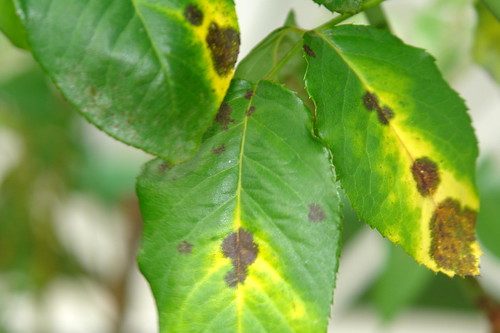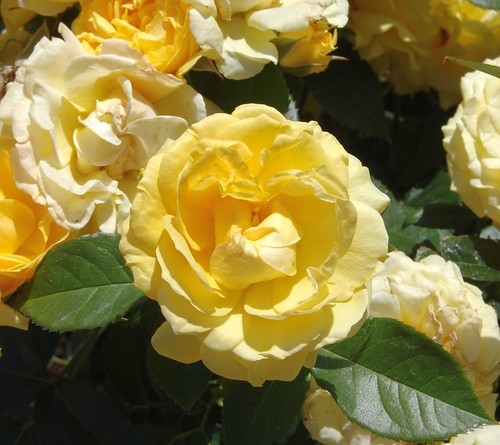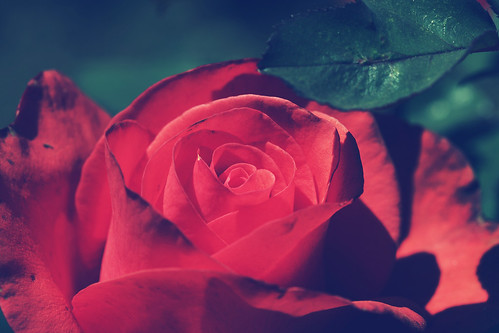
Rose Shy? Start With a Knock Out Rose
The rose is one of the most abundant garden bloomers, but also a bit intimidating to some inexperienced gardeners. Whether it’s the prolific blooms, childhood memories of mothers and grandmothers with perfect rose gardens, or the thorns, some gardeners sadly shy away from rose bushes.
Though fear of the rose is unfounded, starting with a Knockout Rose is a great way to gain confidence in successful rose gardening, or gardening in general, for that matter. The Knockout Roses have been bred to resist most diseases, grow and bloom with less watering and reward the gardener with less maintenance than most shrub roses. There’s a reason that Knock Outs became the best-selling series of roses in the United States in just over a dozen years.
History of Knockout Roses
Knockout Roses are the result of the lifetime efforts of Wisconsin breeder William Radler, who bought his first rose at age 9 years old. Radler introduced the first of the Knock Outs, the original red, in 2000. The rose was recognized that year as an All America Rose Selection winner. His 2007 Rainbow Knock Out also was chosen for the prestigious award. Radler crosses roses with one another, selects the best rose from the bunch, then crosses them again. As a result, he has produced shrub roses that are winter hardy despite their tolerance for less water. They’re also more resistant to disease than most shrub roses and can self-clean, which means gardeners don’t have to deadhead, or remove spent flowers during the summer to encourage further blooming.
In addition, Radler has bred some stunning beauties, including the Double Knockout Roses, which offer all the benefits of the series, but have larger, fuller blooms. All Knock Out Roses bloom every 5 to 6 weeks from early spring until fall’s first frost, with no deadheading.
Caring for Knockout Roses
Once you’ve planted your Knock Out Rose in a sunny spot and given it enough water to help the roots get established, sit back and enjoy the blooms. You can encourage better blooming with a dose of rose fertilizer after each blooming period from spring through summer. Just follow the fertilizer package directions. Other than that, you only need to prune Knock Out roses for shape every year in late winter or early spring just before the leaves begin to form if you want to control their size or shape. Look for dead, damaged and diseased canes.
As the shrub matures, you can cut older canes back by up to a third of their length to help keep the bush healthy. And prune a little heavier if you’ve planted several Knock Out Roses together to form a hedge. Your Knock Out Roses should be able to take heavy pruning, and there is no need to be a rose-pruning expert.
Although Knock Out Roses are bred to resist diseases, their leaves can turn slightly yellow or spot some when the weather is particularly hot, humid and wet. The good news is that the problem will pass as soon as the weather improves, so gardeners should not worry or feel they need to apply a fungicide. Keeping the rose pruned just enough so that air can circulate inside and around the shrub can help prevent the problem when muggy weather hits.
Aptly Named
The Knock Out Rose series is aptly named mostly for the long-lasting color Radler has achieved in his breeding. The Sunny Knock Out Rose also produces sweet fragrance in its bright yellow blooms. But the shrubs’ hardiness in zones 5 through 10, along with overall toughness in various weather conditions, have made the Knock Out Roses wildly popular in the United States and around the world.
Knock Outs are a perfect, long-blooming addition to any rose garden, but they’re almost too beautiful to be mixed in among their own kind. The beginning gardener or new homeowner can choose Knock Out Rose shrubs and trees as the centerpiece of a landscape to serve as colorful hedges or specimen plants along sunny walls. Select a low-lying evergreen shrub to plant near the Knock Out Rose for year-round green in your garden, and a few low-growing ornamentals to complement the stunning color or the rose’s blooms above. Verbena, dianthus, or a sedum groundcover often look terrific under specimen Knock Out roses.











